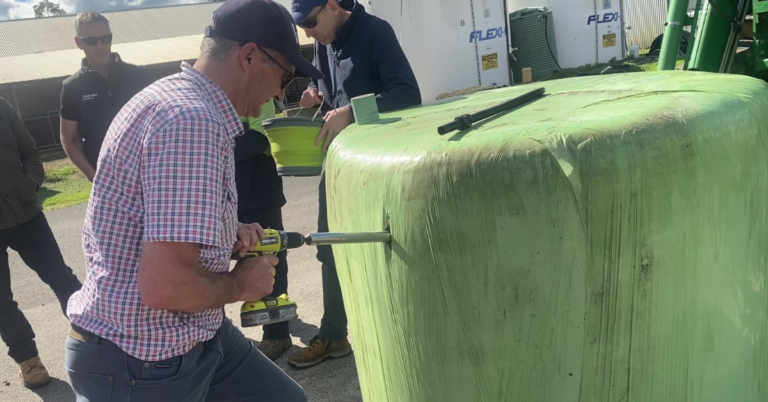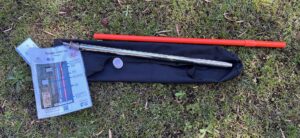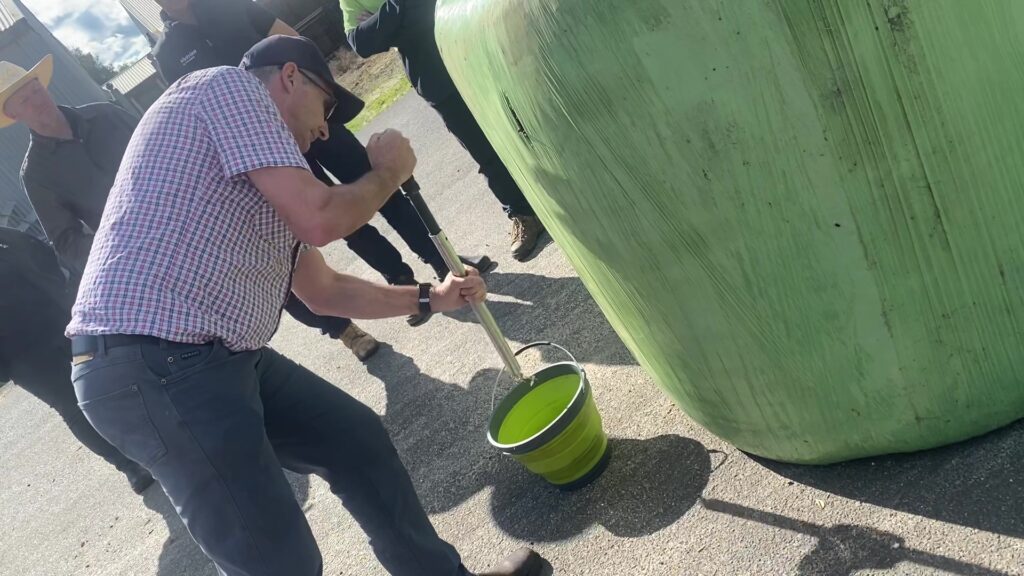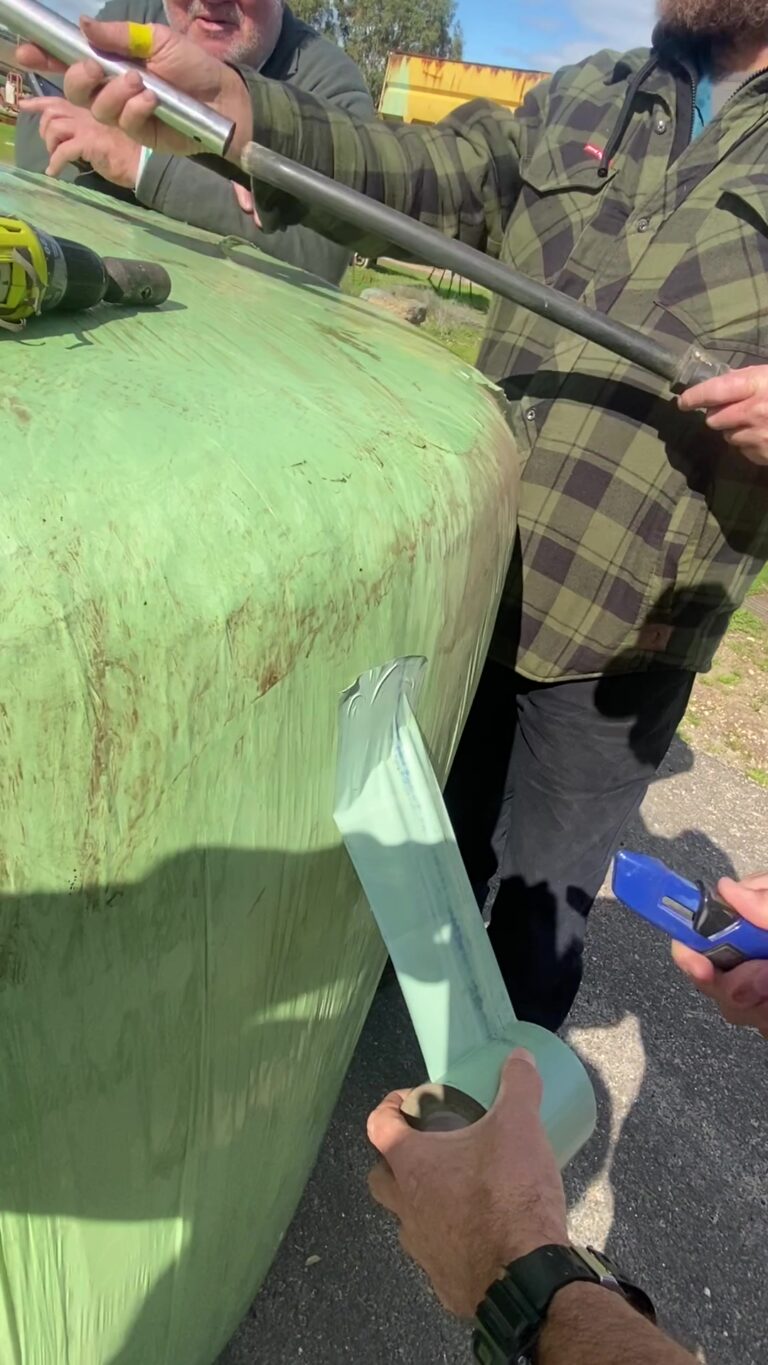
Dario Nandapi taking a silage sample with a corer attached to a drill.
Key to increasing livestock farming profit is providing the best nutrition to animals possible by growing the best quality forage possible, according to ruminant nutrition expert Dr Martin Staines.
Really knowing what you are feeding your animals improves decision- making, says Martin, and achieving that means sending representative samples to a lab for testing.
Forage tests detail key nutritional factors so producers can assess how well the livestock eating it are likely to perform. And one of the more important nutritional factors is metaboliseable energy.
“In Southern Australia, the energy content of a feed is almost always the prime limiting factor to animal performance,” Martin said.
“That’s not to say that other factors aren’t important, but generally, energy is the prime driver.”
To maximise performance, growers should aim for at least 9 MJ/kg DM in hay, and at least 10 MJ/kg DM in silage.
Visual inspection for quality not accurate enough
Livestock consultant and Western Beef Association Executive Officer Jeisane Accioly said small numeric differences in nutritional values, such as a difference in metaboliseable energy of 0.5 MJ/kg DM, can have a big impact on stock performance.
So knowing the nutritional value means we can allocate it appropriately to help rather than hinder production. Visual inspection of quality is not accurate enough.
“High quality feed can be allocated to stock with higher requirements (such as lactating or young growing animals), while low quality (high fibre) forage can be used for instance after the break of season when pasture is high in energy but lacks fibre which is important for rumen health,” Jeisane said.
The first step in taking a representative sample, according to Jeisane, is to stack or group bales according to the mother crop (e.g. oats separated from clover/ryegrass).
She also recommended separating bales of the same crop that had different crop management or baling history. For example, if some paddocks were fertilised differently, baled late or rain-affected, sample them separately.
Sampling hay and silage requires a forage corer, and Western Beef Association is currently distributing eight throughout the State that can be borrowed by farmers, including in Bunbury, Busselton and Manjimup (details below).
Jeisane recommended sampling a minimum of ten bales from each stack and ensuring the corer reached the middle of the bale.
Hay can be sampled soon after baling, but silage should be done at least three weeks after baling to allow the fermentation process to stabilise. Cover the sampling hole in the silage wrap with specialised silage tape so that air doesn’t spoil the silage.
Helpful tips
Other recommendations include:
- Remove air from silage samples;
- Mail samples early in the week to avoid being stuck in transit over the weekend;
- Use an accredited laboratory; and;
- Stick with the same technique, timing and laboratory in subsequent years so you can more accurately detect any changes in quality over time.
To find a lab, search for “hay testing Australia” in your internet search engine.
Helpful videos
For more information, watch these videos:
- Forage testing: Why, when and how – featuring Jeisane Accioly
- Using Rumen8 to create beef cattle diets: Nutrition 101 – featuring Martin Staines
Loan a corer

Forage corers are currently available for free loan at:
- Bunbury – South West NRM – call Peter Clifton on 0409 680 900
- Busselton – Geocatch – call Jenelle or Michelle on 0491 069 078
- Manjimup – Southern Forests Food Council – call Laura on 0419 971 080

Removing the drill and emptying the corer into a bucket.

Patching up the hole in the silage wrap with silage tape.
